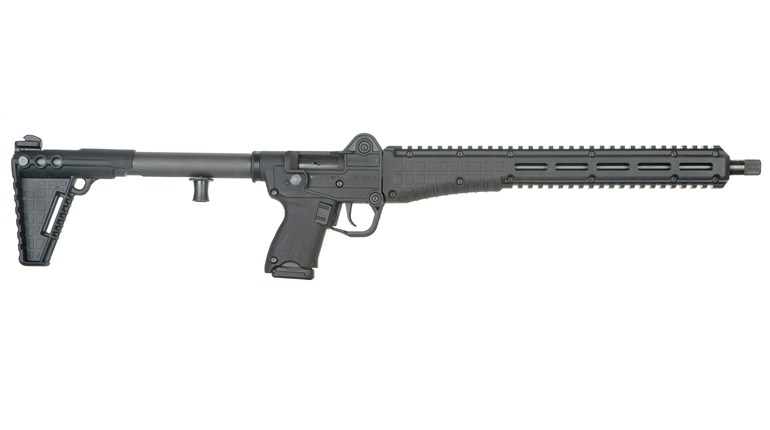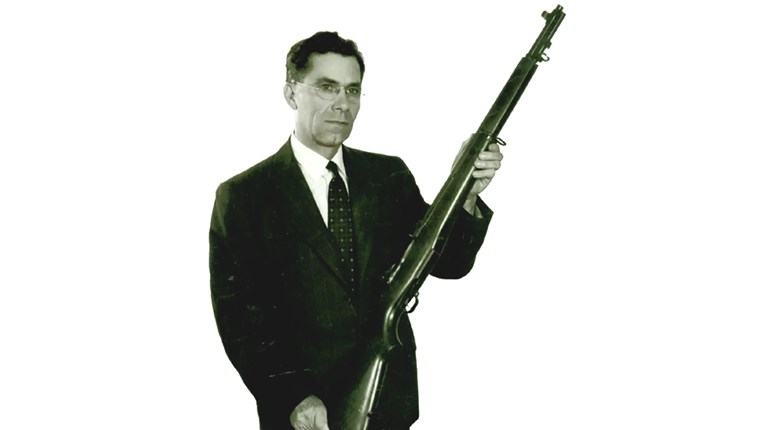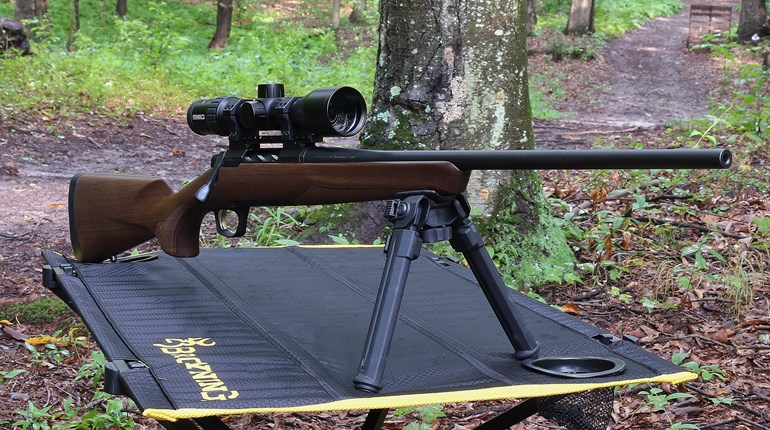
John Browning’s last project, completed by FN, is finally getting its due. The Hi-Power, first seen in 1935, was a well-loved gun, but it was also known for needing upgrades that custom gunsmiths charged a lot of money to provide. Now, Springfield is giving it a fresh start as the SA-35. It has forged frames and slides and hammer-forged barrels, but this version of the complete pistol costs less than the upgrades used to. Springfield, to put it simply, is building Hi-Powers for the 21st century.
 Improvements start right at the top of the SA-35, with proper sights. (The Hi-Power’s originals were more suggestions than actual aiming devices.) Its extractor is external and almost impossible to break. Springfield has installed a larger ergonomically angled safety lever. You use it in the same way you use one on a Model 1911: You carry it cocked and locked and press the safety down as part of the draw stroke. That option alone used to cost a few hundred dollars extra in the old days.
Improvements start right at the top of the SA-35, with proper sights. (The Hi-Power’s originals were more suggestions than actual aiming devices.) Its extractor is external and almost impossible to break. Springfield has installed a larger ergonomically angled safety lever. You use it in the same way you use one on a Model 1911: You carry it cocked and locked and press the safety down as part of the draw stroke. That option alone used to cost a few hundred dollars extra in the old days.
The original Hi-Powers would bite. They were designed when everyone shot one-handed; as a result, the hammer could draw blood if you used a high grip (as you do in the modern two-handed grip). Springfield re-sculpted the hammer so it can’t reach your hand.
Another change is the removal of the magazine disconnector. This was a spring-loaded plunger in the trigger bar that pressed against the magazine tube. The friction of the extra parts and the spring itself added several pounds or more to the trigger pull, making the originals less than pleasant to shoot. Springfield has left the disconnector out (there isn’t even room for the parts) and has also tuned the trigger geometry to provide a trigger pull superior to that of what even good gunsmiths in the old days could provide.
The old models often ended up with magazines that had to be pried loose—no drop-free mags there. (This was such a problem that Browning even made magazines that were spring-loaded for self-ejection.) The SA-35’s magazines drop free.

The grips of the Hi-Power have varied through the decades, but there was one aspect they all had in common: bulk. At their worst, the grips on the old models felt like you were trying to shoot while holding onto a piece of lumber. The grips on the SA-35, however, are slim, sculpted and checkered and are generally far superior to the old ones. They’re almost as good as the custom grips of the old days.
The last improvement is in its magazine. The original magazines held 13 rounds, which was an amazing amount in 1935. Now, it isn’t even pedestrian, as even much-smaller 9 mm pistols can hold more. The magazine tubes used to have two splines in the bottom to control the magazine spring during compression. Springfield eliminated the splines and changed the spring, making extra space for two more rounds. Fifteen rounds of 9 mm still isn’t record-breaking, but it is a good amount. And the magazines reload quickly; this is due, in part, to the slight bevel that Springfield added to the mag-well opening. The SA-35’s changes don’t prevent use of the old magazines, though, so if you find a box of older Hi-Power mags at a gun show, they will fit. Another benefit of this new design of an old gun is anyone who makes holsters offers something that will fit.
As an all-steel pistol, the SA-35 is going to be a bit portly, tipping the scales right at two pounds. This, however, makes for a pistol that is comfortable to shoot, as the extra few ounces help to dampen felt recoil. The matte blued finish is a nice nod to the many military uses the originals were put to and allows you to get custom finishes applied should you wish.
I found the SA-35’s trigger to be amazingly good for the design, fully as nice as well-made 1911s and better than a lot of striker-fired, modern-design pistols. The all-steel construction kept recoil comfortable, and the accuracy was superb.
The prices of the older Hi-Powers have been climbing, due in part to FN stopping manufacture a few years ago. They went past a thousand dollars soon after we got that news and have kept going up. Even when in production, they cost more than similar-sized 9 mm pistols, and you could easily double the cost of an old one by getting the necessary upgrades that Springfield now provides as standard features. All this makes the SA-35’s list price of $700 seem very reasonable. So, if you want a daily carry gun (or just an accurate and comfortable 9 mm plinker) that’s all steel, and you like blued steel and walnut, your path is clear.


































